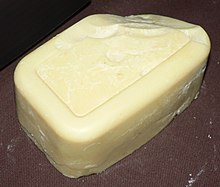**Group 1: Cocoa Butter Extraction and Composition:**
– Main constituent: triglyceride derived from palmitic, oleic, and stearic acid
– Cocoa beans processed: fermented, dried, roasted, and separated to produce cocoa nibs
– Cocoa nibs composition: about 54–58% cocoa butter
– Extraction process: cocoa nibs ground to form cocoa mass, then pressed to separate cocoa butter
– Deodorization: sometimes done to remove strong tastes from cocoa butter
**Group 2: Adulterants and Substitutes of Cocoa Butter:**
– Analytical methods used to detect diluted cocoa butter
– Characteristics of adulterated cocoa butter: lighter color, reduced fluorescence, higher non-saponifiable content
– Substitutes: coconut, palm, soybean, rapeseed, cottonseed oils, shea butter, mango kernel fat, PGPR
– Chocolate standards: US requires 100% cocoa butter for chocolate, EU limits alternative fats to 5%
– Cost considerations leading to the development of substitutes
**Group 3: Uses of Cocoa Butter:**
– Major ingredient in all types of chocolates
– Extensively used in pharmaceuticals, especially in suppositories
– Versatile ingredient in various food and cosmetic products
– Known for its stability, pleasant fragrance, and emollient properties
– Popular in skin care products like soaps and lotions
**Group 4: Personal Care Benefits of Cocoa Butter:**
– Cocoa butter’s stability around body temperature prevents rancidity
– Natural antioxidants contribute to its long storage life
– Emollient properties make it a popular ingredient in skin care products
– Pleasant fragrance and velvety texture enhance personal care products
– Shelf life of cocoa butter products can last 2 to 5 years due to its stability
**Group 5: Physical Properties of Cocoa Butter:**
– Melting point typically around 34–38°C (93–100°F)
– Polymorphism: cocoa butter has different crystalline forms with varying melting points
– Crystal structure: form V is the most stable for chocolate production
– Chocolate tempering is crucial for achieving smooth texture and sheen
– Bloom formation: unstable crystallization leads to fat bloom in chocolate
Cocoa butter, also called theobroma oil, is a pale-yellow, edible fat extracted from the cocoa bean (Theobroma cacao). It is used to make chocolate, as well as some ointments, toiletries, and pharmaceuticals. Cocoa butter has a cocoa flavor and aroma. Its melting point is slightly below human body temperature. It is an essential ingredient of chocolate and related confectionary products. Cocoa butter does not contain butter or other animal products; it is vegan.
 Raw cocoa butter | |
| Fat composition | |
|---|---|
| Saturated fats | |
| Total saturated | 57–64%: stearic acid (24–37%), palmitic acid (24–30%), myristic acid, (0–4%), arachidic acid (1%), lauric acid (0–1%) |
| Unsaturated fats | |
| Total unsaturated | 36–43% |
| Monounsaturated | 29–43%: oleic acid (29–38%), palmitoleic acid (0–2%) |
| Polyunsaturated | 0–5%: linoleic acid (0–4%), α-Linolenic acid (0–1%) |
| Properties | |
| Food energy per 100 g (3.5 oz) | 3,699 kilojoules (884 kcal) |
| Melting point | 34.1 °C (93.4 °F), 35–36.5 °C (95.0–97.7 °F) |
| Solidity at 20 °C (68 °F) | solid |
| Refractive index | 1.44556–1.44573 |
| Iodine value | 32.11–35.12, 35.575 |
| Acid value | 1.68 |
| Saponification value | 191.214, 192.88–196.29 |
